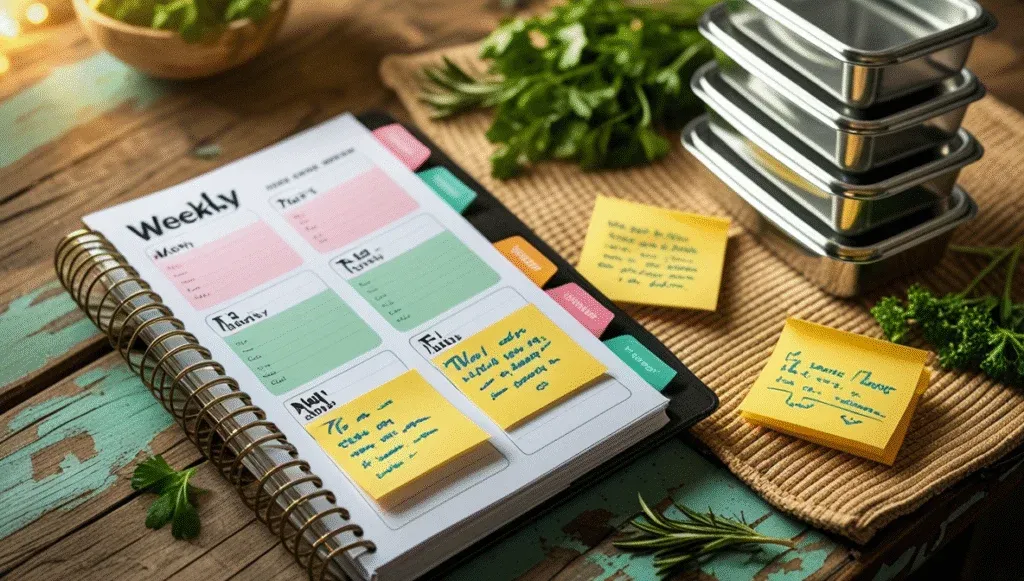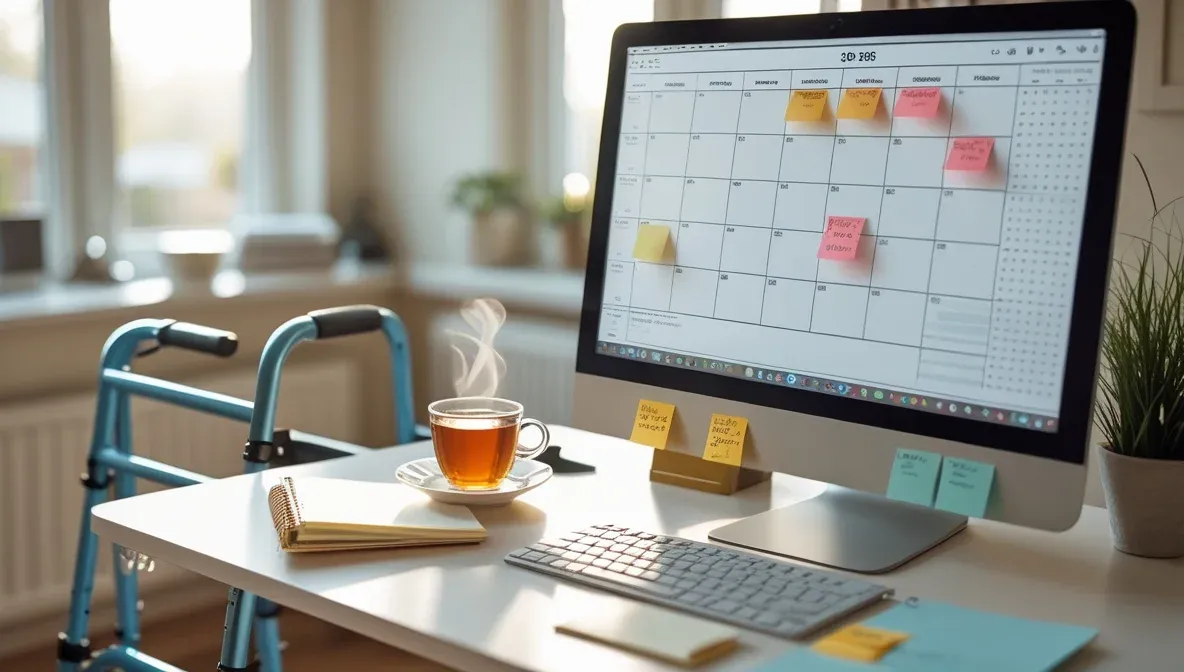I’m Stephen, and I’ve lived with multiple sclerosis since 1994. Over the years, I’ve come to realise that energy isn’t something I can take for granted. MS fatigue is not like ordinary tiredness — it’s unpredictable, draining, and often invisible to others. To live well, I’ve had to learn how to conserve energy carefully, structuring my day around what truly matters and letting go of what doesn’t.
Energy Is My Currency — I Spend It Wisely
When you live with multiple sclerosis, energy becomes a precious resource — one you can’t afford to squander. That’s why we should conserve energy: not out of laziness or defeat, but out of necessity. I’ve learned the hard way that trying to push through exhaustion only leads to setbacks. Instead, I now treat energy like currency — carefully budgeted, deliberately spent, and always with tomorrow in mind.
Understanding the Need to Conserve Energy
MS fatigue isn’t the result of a bad night’s sleep or an overbooked day. It’s systemic — often rooted in the disease’s impact on the brain and nervous system. My own experience taught me that even on “good” days, I had to be cautious. I began to conserve energy not only in the moment but proactively, building habits and routines that allowed me to function better across the week.
It was Dr Terry Wahls who first introduced me to the concept of mitochondria — the batteries of life — in her ground-breaking book The Wahls Protocol. These tiny organelles are responsible for generating energy within our cells, and when they’re underperforming, as they often are in people with MS, fatigue can become overwhelming. Understanding this helped me realise that managing energy wasn’t just a lifestyle choice — it was a cellular imperative.
This insight also helped me come to terms with the broader Burden of MS, which includes not just physical symptoms, but emotional and cognitive strain as well. In that context, learning to conserve energy became a way of lightening the load — not just for the body, but for the mind.
That’s where positive thinking plays its part. I don’t mean blind optimism, but a deliberate, constructive mindset — one that says, “I can find a way to make today manageable.” It’s a quiet kind of resilience, and one that pairs well with planning, pacing, and self-compassion.
This isn’t about fear or restriction — it’s about empowerment. By learning to conserve energy, I regained a level of control that MS had slowly eroded. If I don’t respect my limits, my body reminds me quickly and harshly.
Conserve Energy by Creating Predictable Routines
Structure is not the enemy of freedom — it’s what allows it. Predictable routines reduce the need for constant decision-making, which in itself can be exhausting. My mornings follow a set pattern not because I’m stuck in my ways, but because they help me conserve energy right from the start.
Repeating familiar tasks lowers the cognitive burden on overtaxed brain cells — a real advantage when you’re dealing with MS fatigue. But there’s a caveat: if routine slips into robotic repetition, mistakes creep in. I’ve had days where I’ve mislabelled files or misquoted myself in a blog post because I was going through the motions instead of staying present. That’s not the goal. Doing it twice because you weren’t paying attention doesn’t conserve energy — it wastes it.
These routines form part of a wider strategy of fatigue management that helps me stay functional throughout the day. I’ve also found that adopting practical life hacks — like keeping frequently used items within reach or automating reminders — helps streamline daily tasks and reduce the energy cost of basic decisions.
The key is to strike a balance between structure and awareness. My routines serve me best when I remain engaged, not just autopilot. That mindfulness — even in small tasks — helps me avoid unnecessary do-overs and gives the routine its real power.
Spotting the Early Signs of Depletion
One of the most important skills I’ve developed is recognising conserve energy signs — the early warnings that my tank is running low. For me, these include a heaviness in my limbs, blurred vision, and a sudden sense of confusion or overwhelm.
But sometimes it’s more subtle. I know I’m running out of energy when my inner voice whispers, “Oh, that will do,” — usually as I’m trying to finish a blog post. The truth is, it won’t do. That’s not my standard. It’s just the fog setting in. I’ve learned to step away, take a proper break, and return with a clearer head rather than pushing through and producing something sub-par.
Recognising these signs and responding early allows me to recover more quickly and avoid a complete crash. MS doesn’t always give second chances — so I’ve learned to listen the first time.
My Daily Framework to Conserve Energy
Over the years, I’ve built a daily rhythm that supports both my productivity and my wellbeing. It’s not rigid, but it is deliberate. The framework allows me to conserve energy throughout the day while still achieving what matters — and crucially, it gives me permission to rest without guilt. This isn’t about cramming more in — it’s about making room for what’s sustainable.

Midday Rest — Not Laziness, but Logic
Rest is non-negotiable. Around midday, I hit a wall — not a gentle slowing, but a hard stop. If I try to power through, I pay for it in the afternoon and sometimes for days afterwards. So I’ve learned to schedule rest proactively. It’s not something I squeeze in when time allows; it’s part of the plan.
Midday is also time for lunch — a chance to refuel the body — and to catch up with the world. I often watch the news while I eat, and then take ten or fifteen minutes to practise my Spanish. It’s a way of keeping my mind active without overexerting it. This quiet rhythm helps me conserve energy while still feeling connected and engaged.
I sometimes use digital tools — such as timers or fatigue trackers — to make sure I’m not pushing beyond my limits, even when I feel ‘fine’. And on days when I need a different kind of recharge, I check in with one of the support groups I follow online. A few kind words from others who get it can be as restorative as a nap.
That might mean reclining in my armchair, lying flat in a dark room, or watching something undemanding on TV. No phone, no tasks, no guilt. This pause helps me return to the day with enough left in the tank to be present — for myself and others.

Rethink Productivity: Less Can Mean More
In my working life, I used to think productivity meant being constantly busy. That mindset had to change. Now, I measure success differently: Can I complete one meaningful task in the morning? Can I make space for recovery? Can I avoid unnecessary friction?
The old adage “Work smarter, not harder” is especially relevant when living with MS. Rather than trying to do more, I look for ways to do less — better. I break complex tasks into smaller chunks, switch between cognitive and physical activities, and allow for transitions. These strategies help me conserve energy, but they also improve the quality of what I produce. Fatigue fogs the brain — clarity comes from pacing.
There’s power in restraint. I’ve come to believe that doing less isn’t a limitation — it’s a skill.

Plan Ahead to Conserve Energy Across the Week
Some of the best decisions I make each day were actually made the week before. Planning ahead allows me to conserve energy by reducing surprises and preparing for demanding days.
I now batch tasks: preparing blog outlines, scheduling social posts, or cooking meals in advance. I use digital calendars, reminders, and even sticky notes in my office. I lean on my wife, too — especially for shopping or admin tasks that drain me quickly. That’s not weakness; it’s wise use of resources.
As someone also dealing with visual impairment, I’ve learned that good planning goes hand in hand with creating an environment that’s easy to navigate. Whether it’s improving lighting, enlarging text on my screen, or reducing visual clutter, these small adjustments prevent unnecessary strain and help me conserve energy for tasks that really need my attention.
Interestingly, I also find that perusing the day’s problems at night — gently, not obsessively — often helps. As I settle into bed, I might reflect on a technical snag or a post outline, and by morning, the seemingly impenetrable has often fallen into place. The trick is not to dwell on it too intensely. Obsession only disrupts sleep, and poor sleep doesn’t help anyone conserve energy.
By mapping my energy across the week and gently untangling tomorrow’s knots in advance, I’ve built a buffer — and that buffer often makes the difference between a good week and an exhausting one.
Final Thoughts: Energy Is Your Most Precious Resource
Living with MS has taught me many things, but chief among them is this: energy is finite — and far more valuable than we often realise. By structuring my day with intention, I’ve learned how to conserve energy in ways that support both my health and my happiness.
It’s not about doing more. It’s about doing what matters — at a pace that’s sustainable. However you choose to conserve energy, know this: every small adjustment you make is a step toward greater control and better quality of life.

